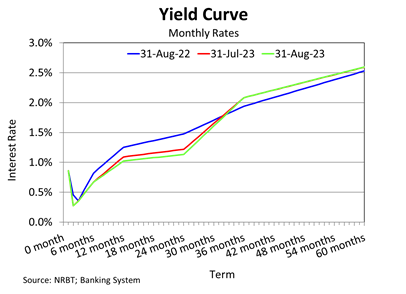Lower exports of late yams drives overall decline in export volume
- Details
- Category: Economic Release
- Created: 25 July 2016
Agricultural Exports Volume
May 2016
| May 16 | Apr 16 | Mar 16 |
Feb 16 |
|
| Total volumes (tonnes) |
432.9 | 759.5 | 340.3 | 325.0 |
Lower exports of late yams drives overall decline in export volume
Lower exports of root crops, fruits and vegetable products drove a 326.6 tonnes (43.0%) decline in total agricultural exports volume over the month. This was largely driven by a decrease of 292 tonnes in the exports of late yams, following a significant increase in April by 338.8 tonnes. In addition, the exports of sweet potato fell by 21.1 tonnes (79.2%). Breadfruit season has come to an end which contributed to a decrease in export volumes of 20.5 tonnes (45.0%). Brown coconut exports also fell by 11.1 tonnes (8.1%). Furthermore, other vegetable products decreased by 0.7 tonnes (45.2%) specifically taro tarua and pele leaves. This offset an increase in exports of cassava and kava powder of 9.1 tonnes (6.7%) and 5.5 tonnes (61.5%) respectively.
Despite the decline in volume, agricultural export proceeds rose by $0.15 million (84.8%) to $0.32 million over the month, reflecting lagged effects of the receipt of export proceeds. The increase in export proceeds was mainly due to a rise in receipts denominated in United States (US) dollar, Australian dollar and also New Zealand (NZ) dollar.
Higher export volume of fruits and kava products over the year was offset by the reduction in volume of root crops and other vegetable products. As a result, total agricultural exports volume continued to decline by 285.7 tonnes (3.3%) mainly due to a significant reduction in exports volume for taro (swamp, giant, tarua) by 1,163.89 tonnes (83.3%) and yam (sweet, other) by 548.0 tonnes (41.5%). Additionally, exports of cassava decreased by 145.6 tonnes (9.6%) and vegetable products declined by 25.4 tonnes (54.2%) particularly taro tarua and pele leaves. The adverse weather conditions had significantly affected the agricultural products during the year, which is reflected in a 2.9% rise in domestic food prices. In contrast, exports of squash and kava products increased by 1,568.7 tonnes (71.2%) and 62.6 tonnes 30.2% respectively. However, total agricultural export receipts rose by $1.5 million (30.9%) to $6.15 million, driven mainly by higher receipts for squash and kava exports. The strengthening of the US dollar, Japanese Yen and Australian dollar against the Tongan Pa’anga support the higher export receipts.
The 2015/16 year has seen better weather conditions than that of the previous year and the squash exports during the 2015 squash season improved therefore the NRBT maintains its forecast of a rebound in the agricultural sector for 2015/16. Additionally, the re-opening of the HTFA facility at the Fua’amotu airport would support the exportation of breadfruit, papaya, tomatoes and the new products to be introduced such as chillies and eggplant. The possibility of a new market for Tonga squash exports to China may boost total agricultural exports volumes. The initiatives from the January 2016 Agricultural Annual Conference to improve the existing infrastructure for farmers should also support the forecast of higher agricultural output. In contrast, exports of kava-Tonga are expected to decline as liaisons with growers have indicated low supply for the next 3 years due to the drought. However, the latest revised media release by the Meteorology Division advised that El Niño conditions (drier than normal) is now at moderate levels and likely to end in the second quarter of 2016. The outlook indicated that neutral conditions are slightly favoured ahead of La Niña for the second half of 2016 and rainfall for the next 3 months will remain below normal. This poses a risk for the outlook of the agricultural sector.
Download the full report: Agricultural Exports Volumes - May 2016

